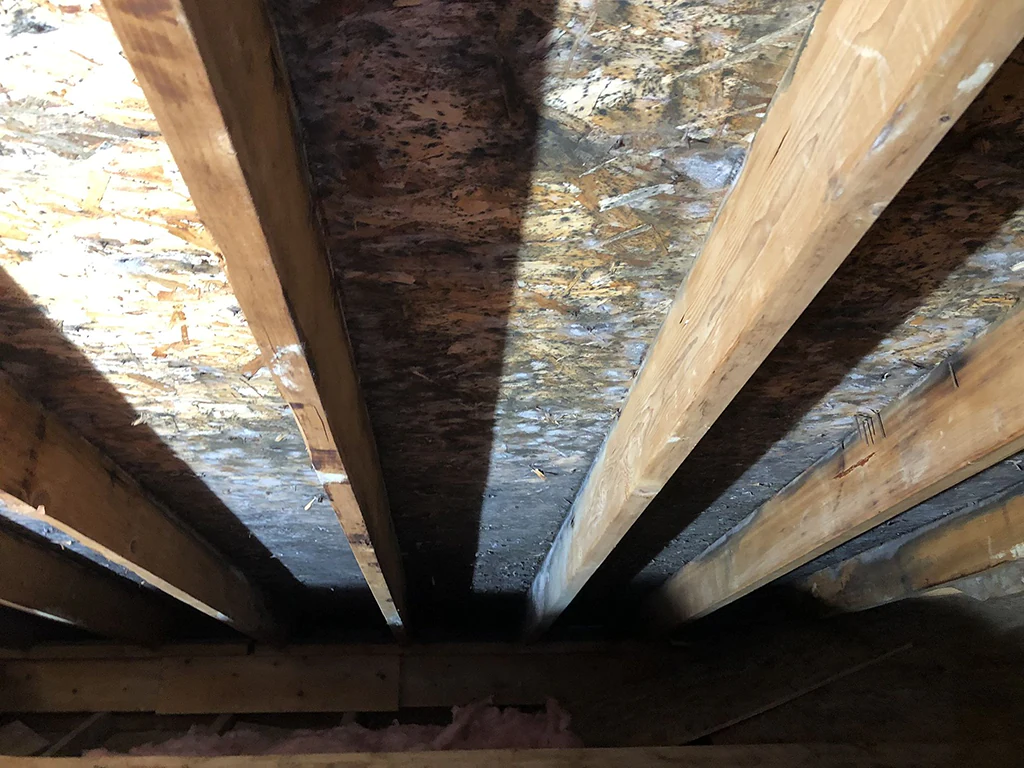
How to Remove Mold in the Attic – and What Causes It to Grow
If you’ve climbed into your attic and caught a whiff of that unmistakable musty odor—or noticed dark, patchy spots spreading across your attic plywood—you’re likely dealing with a mold problem. And while attic mold might feel out of sight and out of mind, it can quietly cause serious health risks, structural damage, and unexpected expenses down the line.
Today, let’s examine what causes mold in the attic, how to remove it safely, and the crucial role attic ventilation (or lack of it) plays in mold growth and prevention.
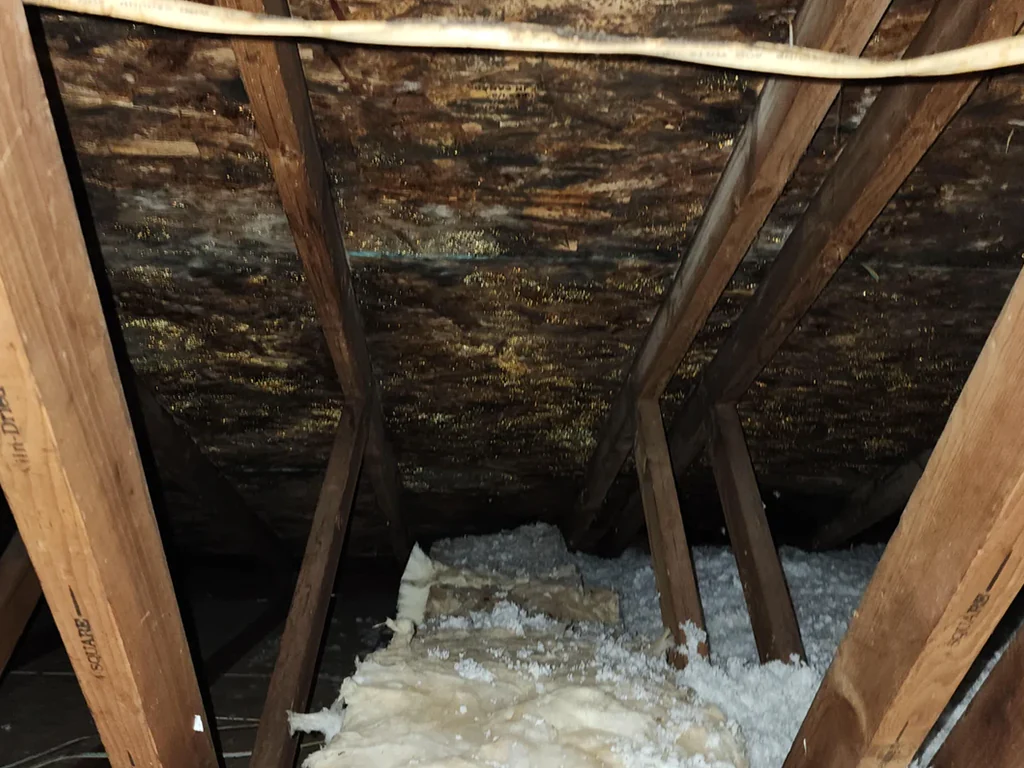
Why Mold Grows on Attic Plywood
In Michigan, the attic is one of the most common areas for mold growth, and attic plywood is usually the first surface it shows up on. That’s because mold spores love moisture, and when warm, moist air rises from your home and hits the cold surface of the attic plywood or roof sheathing, it condenses. That lingering moisture creates the perfect breeding ground for mould spores to take hold and spread.
Overlooked causes
You may wonder why roofing contractors, subject matter experts in roofing, advise on mold issues instead of mold experts. The answer is that a roofing contractor can prevent and remove mold in attic spaces. So, let us continue discussing the most overlooked causes: improper ventilation. A ventilation problem, such as blocked soffit vents or a missing ridge vent, prevents air from circulating correctly. Warm air stagnates and moisture accumulates without fresh outside air moving through the attic. That warm, humid air settles on the plywood, and visible mold appears across the roof decking before you know it.
Other culprits include roof leaks that can soak attic plywood over time, particularly during rain or snowmelt. Leaks might not be immediately apparent, but if you observe warped wood, discolored patches, or soft spots on the attic plywood, it’s time to investigate.
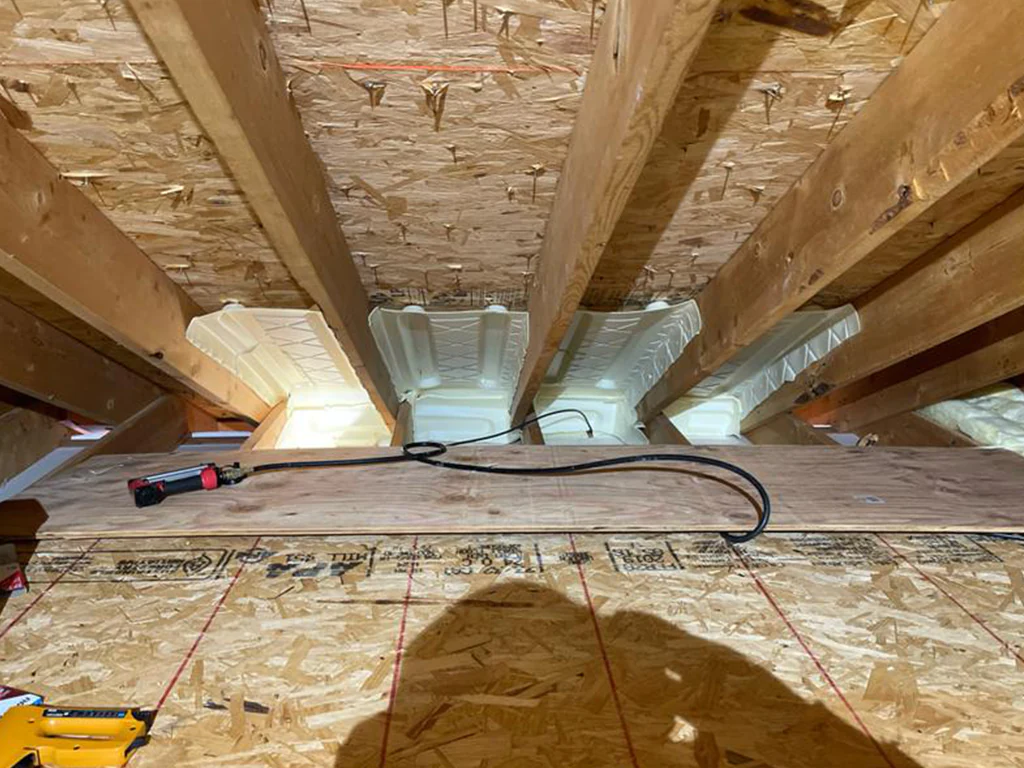
Don’t Forget Exhaust Fans – They Matter More Than You Think
Exhaust fans from bathrooms or kitchens should never discharge warm, moist air into the attic. Yet, it happens frequently and creates attic mold.
If your exhaust fan is venting directly into the attic space, it’s pushing moisture onto your attic plywood day after day. Eventually, that moisture seeps in, feeding mold growth and compromising the wood.
Ensure that your bathroom and kitchen fans are correctly ducted to the exterior. Otherwise, you’re merely circulating humid air into an unconditioned area with no exit—an ideal environment for mold to flourish.
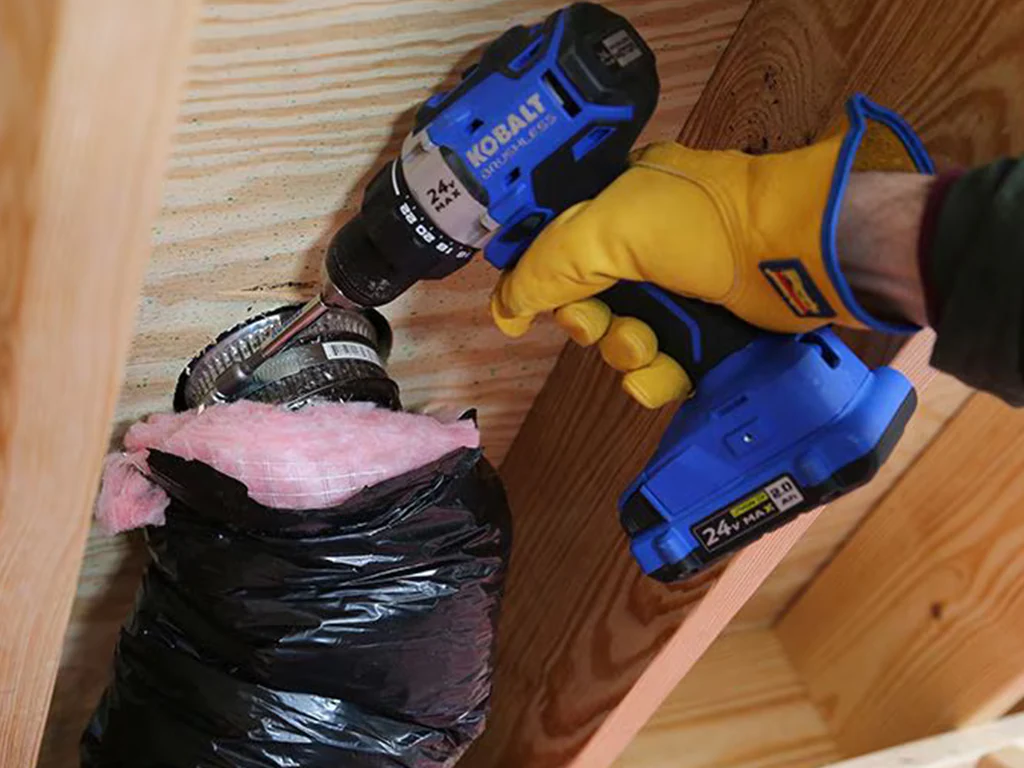
What About Stains? Is It Always Mold?
Not every dark spot is a mold issue. Sometimes, what looks like mold on attic plywood is just staining from roofing materials or aging wood. However, mold tends to have a textured look, often accompanied by musty odors or signs of moisture problems like wet insulation or rusted nails.
Petri dish mold test kits offer insights into mold spores present in indoor air. A mold expert can also inspect your attic to more accurately assess whether you’re dealing with mold or something less serious.
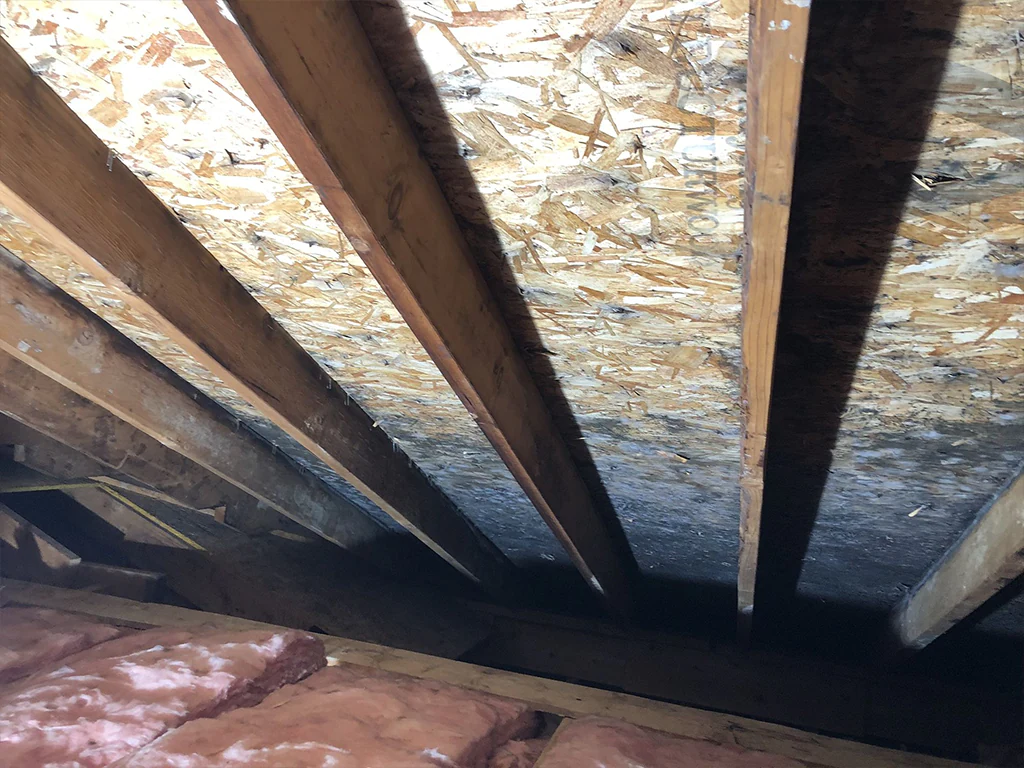
Should You Replace Moldy Attic Plywood?
Here’s the deal – just because there’s mold on your attic plywood doesn’t automatically mean you need to rip it out and replace it. We see this a lot. Homeowners get frightened by a few black spots and think the whole roof deck is toast. But in our experience, it all comes down to whether the wood is still solid.
If the plywood is soft, spongy, or starting to delaminate – meaning the layers are coming apart – that’s a problem. At that point, the mold has been there long enough to soak into the wood, and it’s likely the moisture has done some structural damage. You don’t want weak sheathing under your shingles. That’s when we recommend tearing out the bad sections and installing new attic plywood. It’s safer, helps your roof last longer, and gives you a clean slate to work with.
Mold remediation
Now, if the wood’s still in good shape – solid underfoot, no give, no rot – then you might not have to replace it. We can clean the mold off with the right tools and treatments in cases like that. We usually use a HEPA vacuum to suck up the spores, scrub it down with a mold-killing solution, and sometimes apply a sealant that stops future mold from growing.
When this process is done right, mold remediation can save you much more money compared to full replacement. That said, if the mold is widespread, covering large areas of attic plywood or creeping into hard-to-reach corners, even if the wood’s not soft yet, it might make more sense to replace those sections. Especially if you’re already doing a roof replacement or have other repairs, it’s easier to tackle everything at once than keep patching problems.
One more thing: if you’re planning to sell the house, mold stains – even dead mold – can raise eyebrows during a home inspection. Some buyers might walk away just from seeing black marks on the attic sheathing. In those cases, replacing the moldy plywood might be worth the peace of mind.
The bottom line? If the attic plywood is solid and the mold hasn’t caused any real damage, it can usually be cleaned and treated. But if it’s soft, rotting, or the mold is everywhere, replacement is the smarter call.
Regardless, we always recommend addressing the root of the problem – whether it’s a roof leak, poor ventilation, or bathroom fans expelling moisture into the attic – so it doesn’t return. Because nothing is worse than resolving the same mold issue twice.
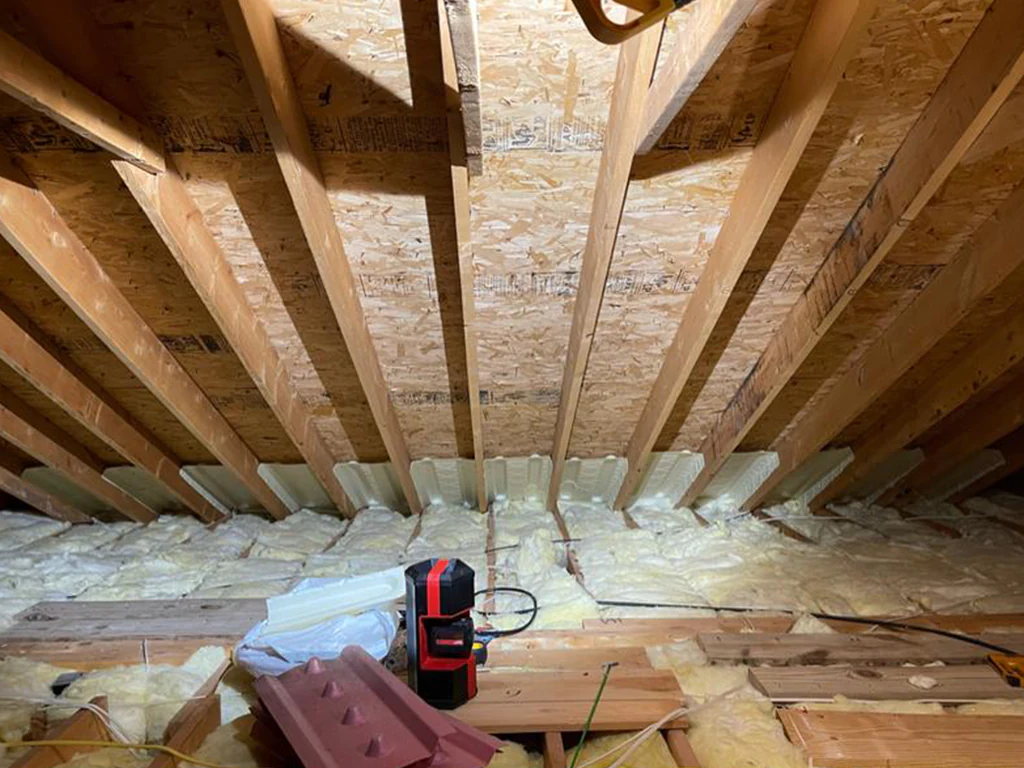
Fixing the Real Problem: Attic Ventilation
One of the most important – and most neglected – steps in mold prevention is addressing ventilation problems. Even if you remove all visible mold from your attic plywood, it will return if the attic lacks proper airflow.
Open vents
Ensure your soffit vents are open and unblocked, your ridge vents are functioning, and there’s a clear path for air to flow from intake to exhaust. A well-ventilated attic allows hot air and moldy attic air to escape, bringing in cooler outside air and preventing the kind of moisture buildup that causes mold growth.
Also, inspect for insulation that might be blocking vents or airflow. In many homes, attic insulation is packed too tightly around soffits or ventilation channels, smothering circulation. That trapped hot air rises and condenses – again, landing right on the attic plywood.
You can find more information on attic ventilation here.
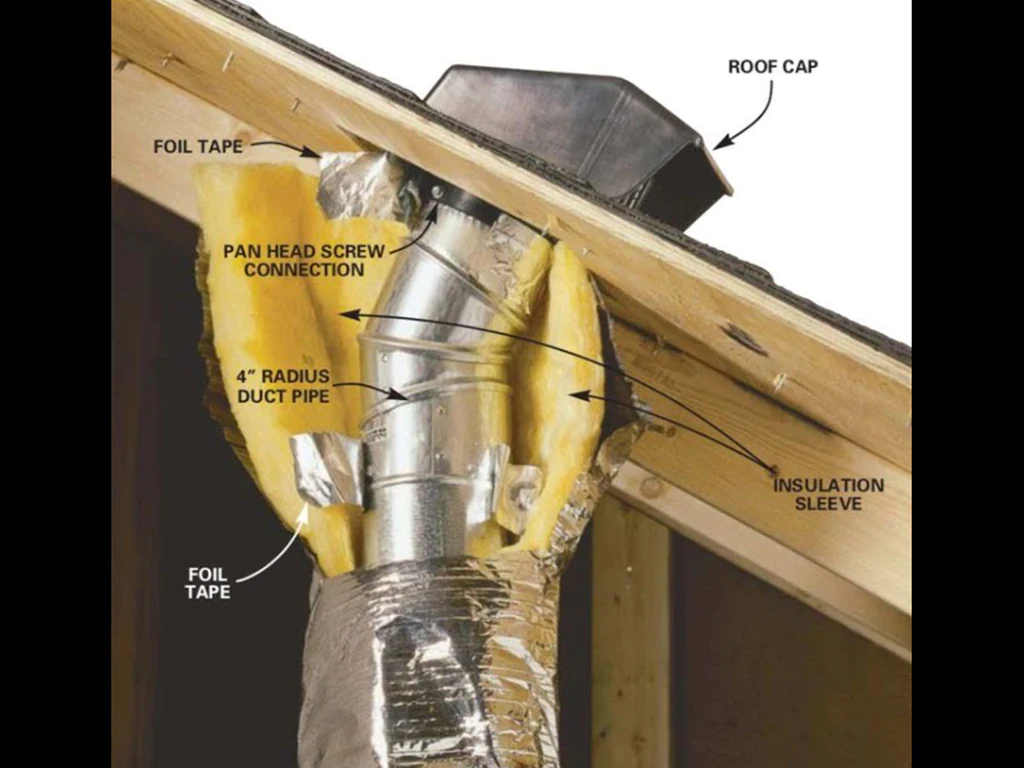
Next? Insulation
Then there’s the insulation itself. You want enough to keep your living spaces warm without allowing heat to rise into the attic and cause condensation. But – and this is key – don’t cram insulation into every corner like you’re stuffing a teddy bear. If you block your soffit vents, you’re killing your attic’s airflow, which will trap humid air and lead to even more mold down the line.
Baffles or vent chutes can help with this. They maintain a clear airflow path from the soffit vents to the roof peak while allowing for proper insulation of the attic floor. That’s how you strike the balance: keep the house warm, while keeping the attic cool and dry.
Prevent ice dams
If your climate is similar to Michigan and receives significant snowfall or ice, you’ll want to prevent ice dams. Ice dams are often caused by heat escaping from the house and melting the roof snow unevenly. Proper insulation and air sealing work together to prevent ice dams, and they also help stop water from backing up under the shingles and soaking the attic plywood.
The Bottom line? Sealing air leaks and adding the right insulation is just as important as fixing a roof leak or scrubbing away mold. It’s all part of moisture control. If you skip this step, warm air will keep rising, the attic will keep sweating, and you’ll be dealing with mold again before long. We recommend investing the right way the first time, and you won’t have mold found twice.
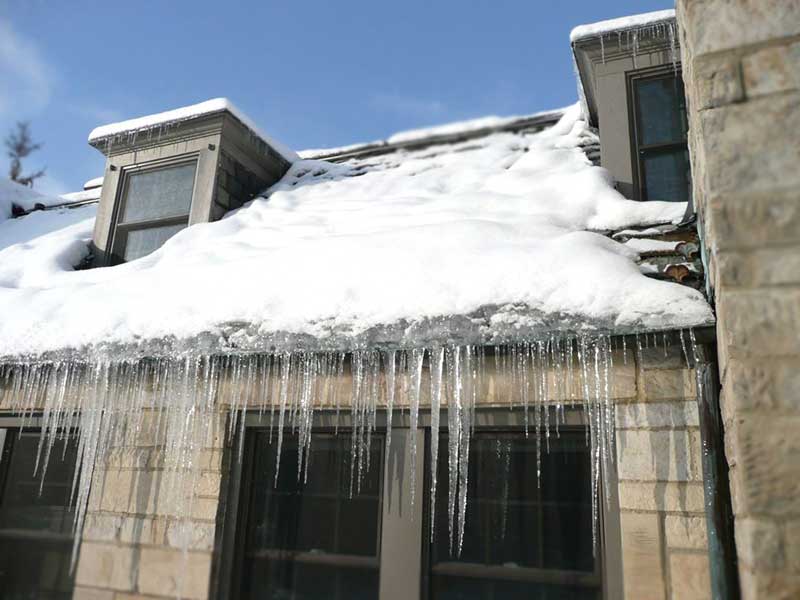
Final Thoughts on Attic Mold
Mold growth in the attic isn’t just a cosmetic concern – it indicates a deeper issue, often related to ventilation problems, moisture buildup, or inadequate air sealing. So, where does it typically appear first? Right on your attic plywood.
Whether you’re facing roof leaks, bathroom mold spreading to the attic, or mold growth from trapped warm air, addressing these issues early is crucial. Remove mold carefully, resolve the underlying problems, and ensure your attic is well-ventilated and properly sealed. Don’t hesitate to contact a mold professional to inspect your attic, even if it isn’t a livable space.
When done correctly, you won’t just eliminate mold – you’ll also prevent future growth from returning. This leads to better air quality, reduced health risks, extra money in your account, and a stronger, healthier home from the attic down.